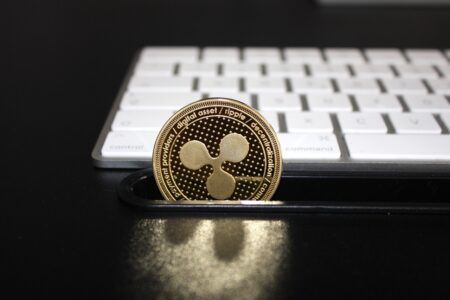The decentralized finance (DeFi) space has been trending in the cryptocurrency industry so far this year thanks to various developments and trends seen in it, including the introduction of governance tokens and yield farming.
The rise of DeFi has seen some market commentators claimed it’s the next bubble in the cryptocurrency space, likening its rise to the 2017 initial coin offering (ICO) bubble that saw the crypto space’s market cap surpass $800 billion, and helped bitcoin reach its near $20,000 all-time high.
Yup! Definitely looks like a bubble. pic.twitter.com/c1KfGkJr6O
— Mati Greenspan (Tweets are not trading advice) (@MatiGreenspan) July 14, 2020
The DeFi space was born in August 2017 when decentralized exchanges and lending protocols started to emerge on the Ethereum blockchain. Bitcoin’s Lightning Network is seen by some as a decentralized finance project too, and contributes to the total amount of value locked in DeFi, which according to DeFiPulse is now at $2.8 billion
It wasn’t until May 2019 that DeFi saw its total value locked surpass $500,000. By February of this year, over $1 million were locked in the space, and that figure has nearly tripled over the last few months. This meteoric growth certainly supports the bubble case, but there are various factors to consider.
There are significant differences we need to point out when comparing the hype behind initial coin offerings, and the hype behind decentralized finance so far.
ICOs Were Built on Promises
Anyone who was around during the 2017 ICO bubble knows that essentially every project managed to raise funds as long as it promised investors a use case that could generate returns. While some legitimate projects raised funds via ICOs to bypass the heavily regulated initial public offerings (IPO) and to avoid giving up equity, others tricked investors knowingly.
Most ICOs managed to raise millions from retail investors simply through well-written whitepapers, despite the lack of a platform, any users, or in some cases a legitimate use case for the token. To say that some projects did not have to be on the blockchain is an understatement.
The hype was such that a project named Useless Ethereum Token raised $300,000 from investors. The token, as its name implies, is useless. The Useless Ethereum Token’s website reads:
You're going to give some random person on the internet money, and they're going to take it and go buy stuff with it. Probably electronics, to be honest. Maybe even a big-screen television. Seriously, don't buy these tokens.
The Useless Ethereum Token started trading on exchanges at about $0.01 per token, and at its peak, each token was worth over $0.15. As the market matured, trading volumes dropped and investors sold their tokens, to the point it’s now illiquid.
During the ICO bubble, investors bought tokens only to later on sell them to someone else at a higher price. There were no self-sovereignty plans, they weren’t looking to be their own bank, they were looking to sell at a higher price.
Decentralized Finance Use Cases
That being said, one could argue there are use cases in the decentralized finance space. Protocols like Compound let users lend tokens to earn interest on their holdings. At press time, interest rates on stablecoins USDC and USDt are between 1.5% and 1.6%, while for DAI the rates are of 5.6%.
Rates for lending other cryptoassets are well below 1%. Nevertheless, these rates are higher than those offered in savings accounts and government bonds. In some countries, centralized finance rates are now negative – investors are paying to lend someone else their money – or are as low as 0.01%.
Moreover, users can borrow cryptoassets from these protocols, and the rates are adjusted according to supply and demand. While some protocols have so far been exploited, the space as a whole, with its use cases, has been moving forward.
One could argue that DeFi’s growth has, in fact, been aided by centralized trading platforms. Major cryptocurrency exchanges like OKEx have over the last few months been listing DeFi-related tokens like Compound’s COMP, adding liquidity to the market, and making it easier for users to invest in these tokens.
Earlier this month, OKEx announced the listing of Polkadot (DOT), a project from the Web3 Foundation that will make it easy to build and connect decentralized applications, services, and instructions. OKEx’s announcement quoted the firm’s CEO Jay Hao as saying
The Polkadot platform has been built by some of the brightest minds in the crypto space, and its mission of enabling Web3 where our data is our own and is safe from any centralized authorities is truly admirable. We’re very happy to be at the forefront of the next web and offer yet another in-demand project to our users.
The exchange also listed Celo Gold (CELO) and the DMM Governance Token (DMG). The former is the utility and governance assets for the Celo community, which aims to build a global financial system and provide financial services to people throughout the world who may not have bank accounts. DMG, on the other hand, offers an onchain-to-offchain lending services, providing users with loan services in the form of physical mortgages.
The listing of these cryptoassets helps users bypass the need to use a decentralized exchange to access DeFi protocols where they can earn interest on their cryptoassets. Moreover, cryptocurrency wallets that give users access to these platforms have been growing, with the popular Opera browser and Brave incorporating them into their platforms.
Good Projects Will Emerge
That being said, it’s still possible the facilitated access is inflating a bubble that is based on use cases built on top of projects that have not yet withstood the test of time. A conclusion we can take from the growth of DeFi is that good projects are, almost certainly, going to emerge.
Even the ICO bubble led to the creation of some good projects. The privacy-centric Brave browser, for example, was funded through an ICO in which it sold its Basic Attention Token (BAT) to investors. Last month, Brave passed 15 million monthly active users.
Brave’s ICO raised $35 million in under 30 seconds as investors competed to get their hands on some tokens. The team behind it has delivered a usable product that actively brings new users to the cryptocurrency space.
Featured image by Carlos Muza on Unsplash.








